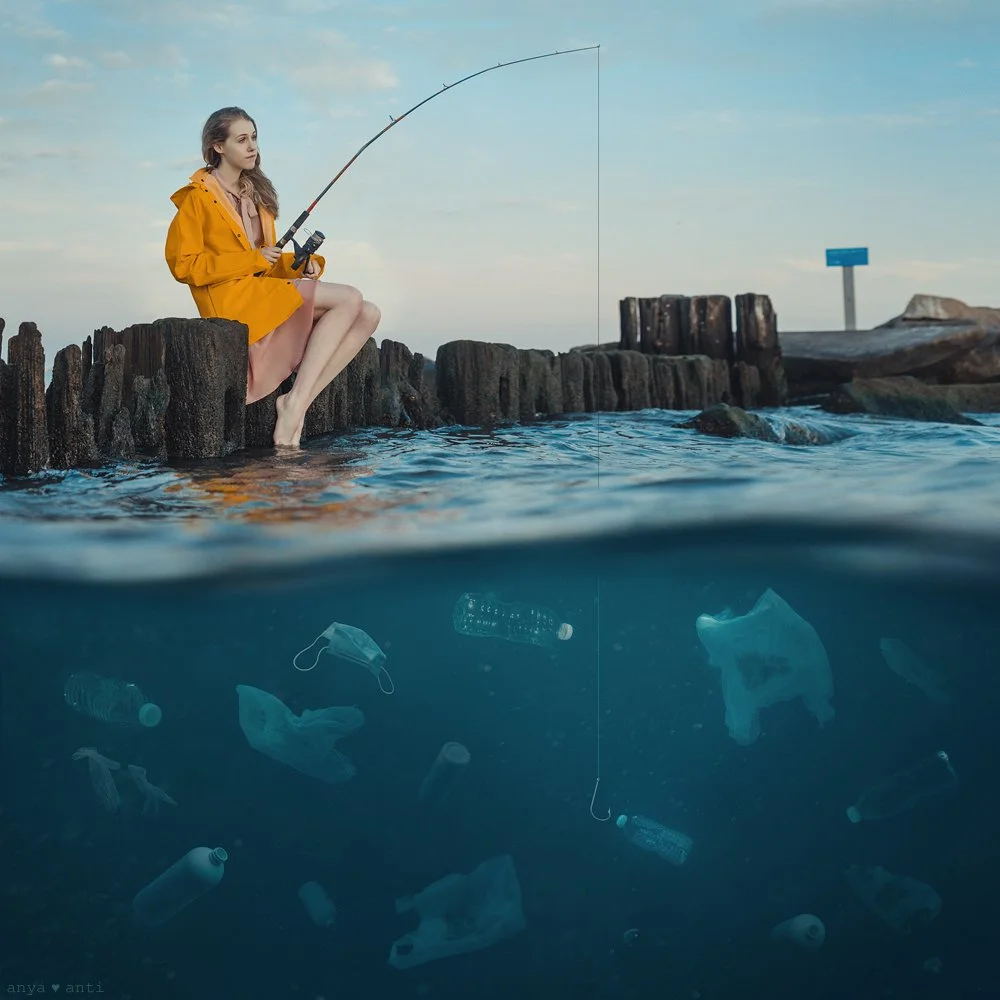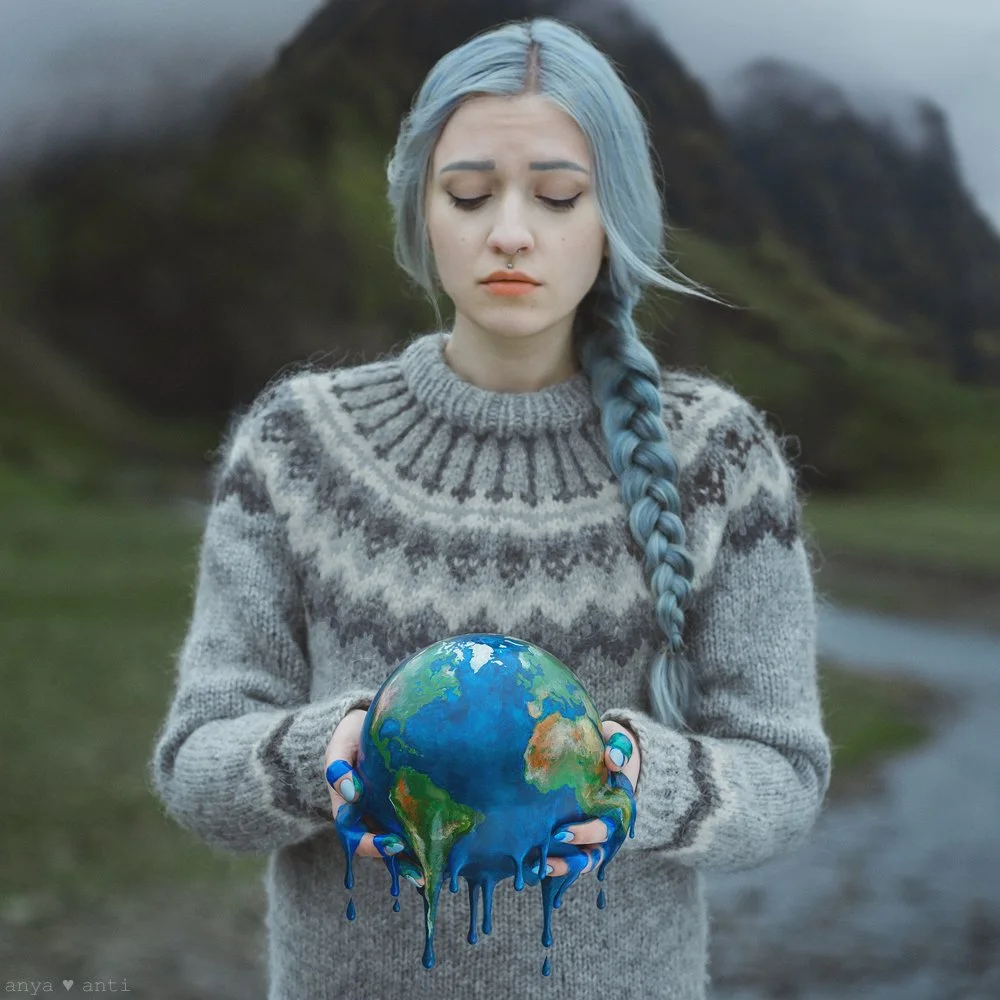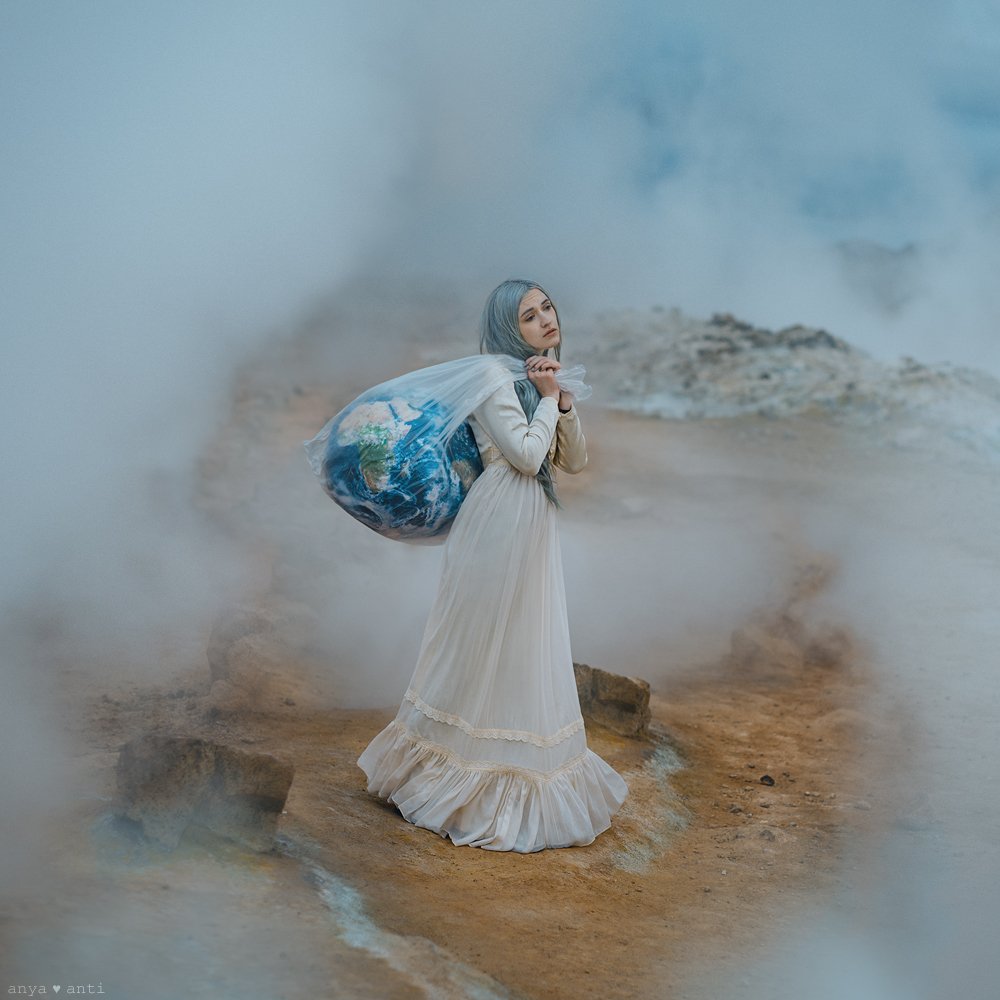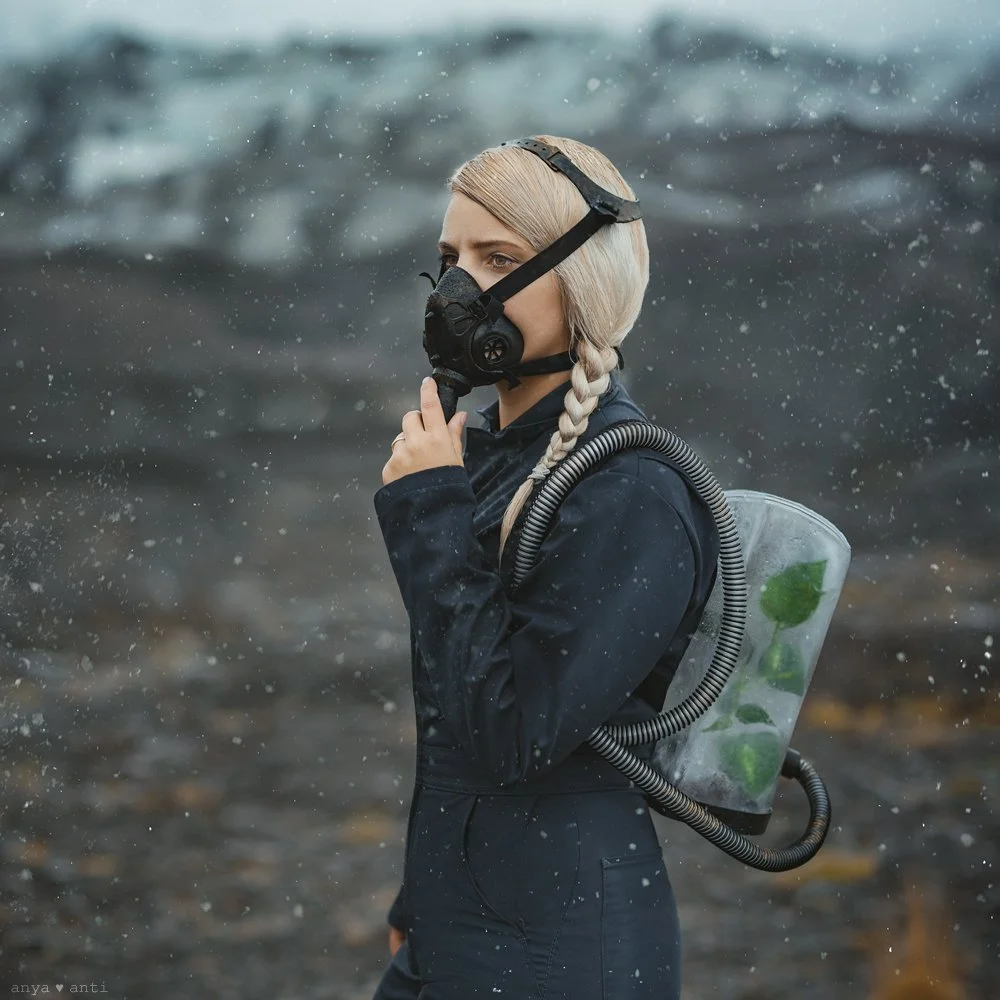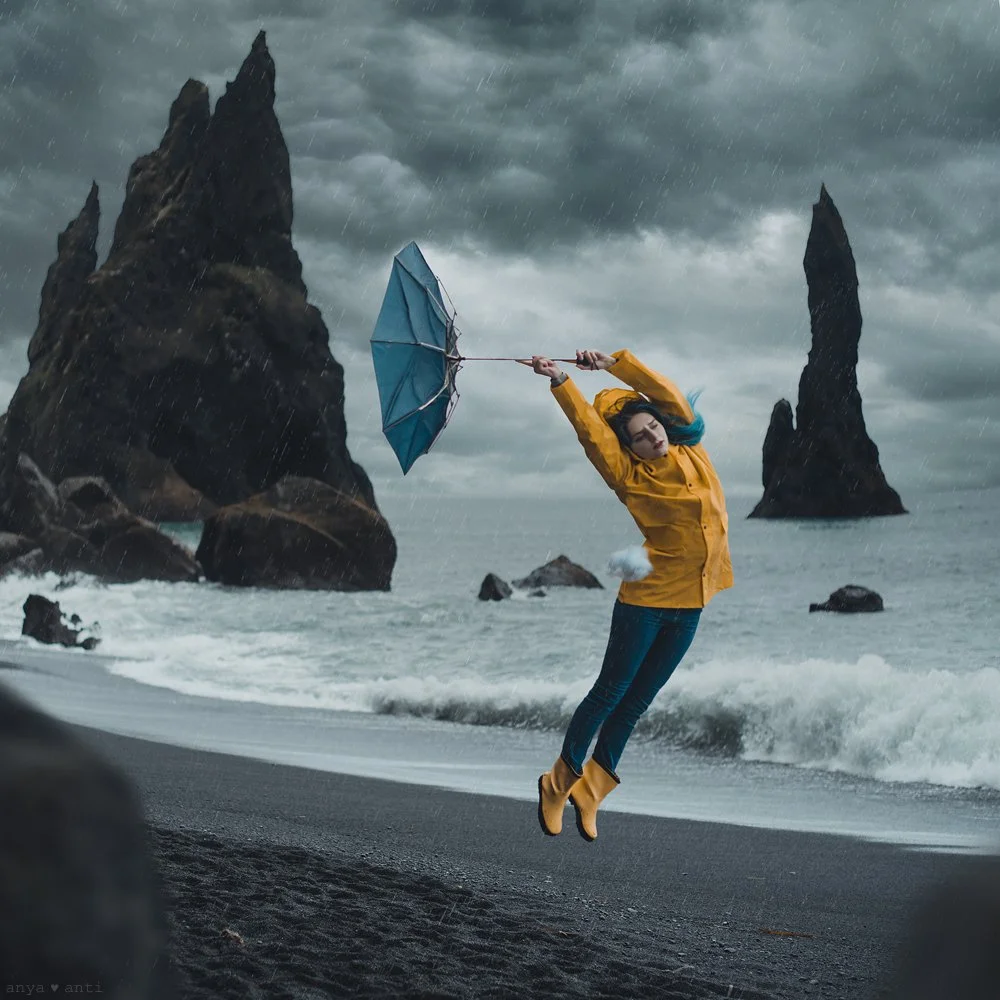“2.5 SECONDS”
"The world will not be destroyed by those who do evil, but by those who watch them without doing anything." - Albert Einstein
Planet Earth is 4.5 billion years old. Mankind is about 140 thousand years old. If we compress the Earth's existence into a normal full day of 24 hours, then we’ve been on this planet for... 2.5 seconds.
In 2.5 seconds we’ve become the dominant species with a rapidly growing population, causing a catastrophic impact on the environment. We have created the industrial revolution and burned fossil fuels creating more carbon in the atmosphere than ever before. We have caused global warming at a record pace, endangering our own existence. We have cut trees and destroyed forests more than ever before, polluted air, water, and soil. We have created an island of waste, the size of the state of Texas, in the middle of the ocean. We have caused the 4th mass animal extinction. Three-quarters of Earth’s land surface is under pressure from human activity. In just 2.5 seconds we’ve turned the planet into our own personal factory.
It took almost 4.5 billion years of evolution for us to exist and we have changed so much in so little time.
The problem is us. And it is up to us if we want to make it to 3 seconds.
ABOUT THE PROJECT
With my project “2.5 seconds” I hope to bring awareness about climate change, to start a conversation about the issue and to educate more people about the facts, the urgency of the crisis and the seriousness of its consequences. The project is a series of photographs that highlight the environmental crisis through metaphors and symbolism. Each one of them illustrates and represents a specific environmental issue using allegorical figures and subjects, props, costumes and natural landscapes.
I used “2.5 seconds” as a title because I wanted to invoke the power of numbers and perspective to create a strong, straightforward and shocking effect.
It all started with an idea I had almost 3 years ago. I have always loved nature, and have been both amazed and captivated by our planet’s beauty. I've traveled to many places before, but none of them could compare to what I felt and saw in Iceland. Visiting Iceland for the first time had a great impact on me and made me realize that our planet is fragile and its beauty may disappear. The thought that nature is being affected and destroyed by the changing climate became personal, shocking and upsetting. I wanted to capture and preserve Iceland's incredible beauty through my art while I still can.
The pressure from human activity is having a catastrophic impact on the environment that endangers our own existence. But I feel like ecology problems that are threatening our environment and affecting everyone on the planet do not get enough media attention.
I am using photography as my unique voice to express how I feel and share my fear for the future. I want to bring more meaning to my work and create a strong message for all the people out there. I hope my art will be louder and clearer than words.
The time to act is now.
GLOBAL WARMING
The world is getting warmer. Since the Industrial Revolution, the global average surface temperature has increased by more than 0.9 degrees Celsius and the amount of carbon dioxide in the atmosphere by more than a third. Most of the warming occurred in the past 35 years, with the warmest years on record taking place since 2010. 2016 and 2019 were the warmest years on record.
Global warming, the gradual heating of Earth's surface, oceans and atmosphere, is caused by human activity, primarily the burning of fossil fuels that pump carbon dioxide (CO2), methane and other greenhouse gases into the atmosphere. More than 197 international scientific organizations agree that global warming is real and has been caused by human action.
It is causing a set of changes and complex shifts to the Earth's which climate scientists call “climate change”. Volcanic eruptions and variations in solar radiation from sunspots have contributed only about two percent to the recent warming effect. The balance comes from greenhouse gases and other human-caused factors.
The rapid rise in greenhouse gases is a problem because it’s changing the climate faster than some living things can adapt to. Also, a new and more unpredictable climate poses unique challenges to all life. A one-degree global change is significant. In the past, a one- to two-degree drop was all it took to plunge the Earth into the Little Ice Age.
Already, global warming is having a measurable effect on the planet.
SEA LEVEL RISE
As humans continue to pour greenhouse gases into the atmosphere, oceans have tempered the effect. The world's seas have absorbed more than 90 percent of the heat from these gases, but it’s taking a toll on our oceans: 2018 set a new record for ocean heating.
Rising seas is one of those climate change effects. Average sea levels have risen over 8 inches (about 23 cm) since 1880, with about a third of that gained in the last 25 years.
Sea level rise is caused primarily by two factors related to global warming: the added water from melting ice sheets and glaciers and the expansion of seawater as it warms.
When sea levels rise as rapidly as they have been, even a small increase can have devastating effects on coastal habitats, it can cause destructive erosion, flooding, soil contamination with salt, and lost habitat for fish, birds, and plants. Higher sea levels are cause more deadly and destructive hurricanes that move more slowly and drop more rain, contributing to more powerful storm surges that can strip away everything in their path.
Already, flooding in low-lying coastal areas is forcing people to migrate to higher ground, and millions more are vulnerable from flood risk and other climate change effects. In the United States, almost 40 percent of the population lives in relatively high population-density coastal areas, where sea level plays a role in flooding, shoreline erosion, and hazards from storms. Most predictions say the warming of the planet will continue and is likely to accelerate, causing the oceans to keep rising. It is projected to rise another 1 to 4 feet by 2100. This means hundreds of coastal cities face flooding.
GREENHOUSE GASES
Greenhouse gases are gases that trap heat in the atmosphere and cause the greenhouse effect on planets. The primary greenhouse gases in Earth's atmosphere are water vapor, carbon dioxide, methane, nitrous oxide, and ozone.
Human activities are changing the natural greenhouse. Since the beginning of the Industrial Revolution, we have produced a 45% increase in the atmospheric concentration of carbon dioxide, the most dangerous and prevalent greenhouse gas. These levels are at the highest levels ever recorded. The last time the concentration of CO2 and methane was this high was over 3 million years ago. Carbon dioxide is the primary greenhouse gas, responsible for about three-quarters of emissions. In 2018, its levels reached the highest monthly average ever recorded.
The vast majority of anthropogenic (man-made) carbon dioxide emissions come from the burning of fossil fuels like coal, oil, and natural gas, with additional contributions coming from deforestation, land use, soil erosion and agriculture (including livestock). The leading source of man-made methane emissions is animal agriculture.
The danger lies in the rapid increase of carbon dioxide and other greenhouse gases that intensify this natural greenhouse effect. These gases absorb solar energy and keep heat close to Earth's surface, rather than letting it escape into space. For thousands of years, the global carbon supply was essentially stable as natural processes removed as much carbon as they released. By disrupting the atmospheric balance that keeps the climate stable, we are now seeing extreme effects around the globe.
Today, climate change is the term scientists use to describe the complex shifts, driven by greenhouse gas concentrations, that are now affecting our planet’s weather and climate systems. The climate changes, and it gets warmer. Extreme weather events, shifting wildlife populations and habitats, rising seas, food supply disruptions, increased wildfires and a range of other impacts. These effects are already having a significant impact on ecosystems, economies and communities.
DEFORESTATION
Forests cover more than 30% of the Earth's land surface. They help people thrive and survive by, for example, purifying water and air. Three-quarters of the Earth’s freshwater comes from forested watersheds. Many animals also rely on forests. They are home to 80% of terrestrial biodiversity. Forests also play a critical role in mitigating climate change because they absorb carbon dioxide produced by human activity that would otherwise be free in the atmosphere and contribute to ongoing changes of climate.
But forests around the world are under threat in the form of deforestation and forest degradation. The main cause of those are agriculture and grazing of livestock, mining and drilling, illegal logging and wildfires.
Today, most deforestation is happening in the tropics. Amazon lost around 17% of the forest in the last 50 years, mostly due to forest conversion for cattle ranching. In the past 25 years, forests shrank by 1.3 million sq km — an area bigger than the size of South Africa. The tropics lost about 158,000 sq km of forest in 2017 — an area the size of Bangladesh.
Just 4 commodities are responsible for tropical deforestation: beef, soy, palm oil and wood products. Human-lit fires are commonly used to clear land for agricultural use. First, valuable timber is harvested, then the remaining vegetation is burned to make way for crops like soy or cattle grazing. Many forests are cleared to make way for palm oil plantations. Palm oil is the most commonly produced vegetable oil and is found in half of all supermarket products. It's cheap, versatile and can be added to both food and personal products like lipsticks and shampoo.
As climate change continues, trees play an important role in the capture and storage of excess carbon dioxide. Tropical trees alone are estimated to provide about 23% that's needed to offset climate change. But the act of clearing the forests also produces greenhouse gas emissions. Deforestation is the second-leading cause of climate change. In fact, it accounts for nearly 20% of greenhouse gas emissions.
POLLUTION
Air pollution is a mixture of man-made solid particles and gases in the air we breathe that pose serious health and environmental threats. Such as fine particles and greenhouse gases (like carbon dioxide) produced by the burning of fossil fuels, сar emissions, urban smog, chemicals from factories, dust, pollen and mold spores may be suspended as particles. Most of them come from energy use and agriculture.
Some air pollutants are poisonous. From smog hanging over cities to smoke inside the home, air pollution poses a major threat to health and climate. Inhaling them can increase the chance you'll have health problems. People with heart or lung disease, older adults and children are at greater risk. Air pollution kills an estimated 7 million people worldwide every year. World Health Organization data shows that 9 out of 10 people breathe air containing high levels of pollutants. More than 80% of people living in urban areas that monitor air pollution are exposed to air quality levels that exceed WHO guideline limits.
While climate change is a global process, it has very local impacts. Increasing temperatures are directly linked to poor air quality which, in turn, can affect the heart and exacerbate cardiovascular disease. For examples a rise in pollen, due to increased plant growth, or a rise in molds, due to severe storms — both of which can worsen allergies and other lung diseases, such as asthma.
Carbon dioxide is widely considered to be a pollutant when associated with cars, planes, power plants, and other human activities that involve the burning of fossil fuels. That's because carbon dioxide is the most common of the greenhouse gases, which trap heat in the atmosphere and contribute to climate change. Other greenhouse gases include methane which comes from such sources as landfills, the natural gas industry, and gas emitted by livestock, and is sulfur dioxide, a component of smog and a cause of acid rain.
GLACIER MELT
Glaciers have been shaping our world for millions of years. But as climate change warms the planet they are disappearing. Since the industrial revolution, human activities have increased greenhouse gas concentration in the atmosphere and have raised global temperatures. Thus glaciers have been rapidly melting. Greenland lost an average of 286 billion tons of ice per year between 1993 and 2016, while Antarctica lost about 127 billion tons of ice per year. Scientists project that if emissions continue to rise unchecked, the Arctic could be ice-free in the summer as soon as the year 2040.
Glaciers act as indicators of climate change and the increased speed of glacier melt is an early warning. Ice acts like a protective cover over the Earth and our oceans. These bright white spots reflect excess heat back into space and keep the planet cooler. As this ice melts, darker patches start to emerge, eliminating the effect that previously cooled the poles, creating warmer air temperatures and in turn disrupting normal patterns of ocean circulation.
Melting ice sheets contribute to rising sea levels. Because that water is stored on land when it melts it significantly increases the amount of water in the ocean. That increases coastal erosion and creates more frequent and intense storms and hurricanes. The recent rate of global sea level rise has departed significantly from the average rate and is rising more rapidly.
The loss of glacial ice also reduces the amount of fresh water available for plants and animals on land. Large additions of freshwater change water salinity and change the ocean ecosystem. In the Arctic, as sea ice melts, wildlife like walrus are losing their home and polar bears are spending more time on land not being able to hunt.
Rapid glacial melt in Antarctica and Greenland also influences ocean currents, as massive amounts of very cold glacial-melt water entering warmer ocean waters is slowing ocean currents such as Gulfstream. This will disrupt weather patterns worldwide.
PLASTIC POLLUTION
By 2050, there will be more plastic than fish in the ocean.
We're surrounded by plastic. It wraps our food and cosmetics, it’s in the packaging we discard, bottles that fill our shelves, and in our clothing, which sheds microplastic fibers in the wash. But, disposable consumer goods end up – often after a single, fleeting use – in land-fills, littering our landscapes, and polluting our Ocean.
While it has many valuable uses, we have become addicted to single-use or disposable plastic — with severe environmental consequences. It led to a throw-away culture and today, single-use plastics account for 40% of the plastic produced every year. Around the world, 1 million plastic drinking bottles are purchased every minute, while up to 5 trillion single-use plastic bags are used worldwide every year and then thrown away.
Plastics are inexpensive, and as a result, levels of plastic production by humans are enormous. An estimated 8 million tons of this plastic waste enters the Ocean every year. That’s the equivalent of setting five garbage bags full of trash on every foot of coastline around the world. Researchers estimate that more than 8.3 billion tons of plastic has been produced since the early 1950s. About 60% of that plastic has ended up in either a landfill or the natural environment.
Global plastics consumption is predicted to grow dramatically, reaching close to 400 million tons a year by 2025. If the rate at which plastic debris enters the Ocean goes unchecked, it is possible that the Ocean could contain more plastic than fish by 2050. Not one square mile of surface ocean anywhere on earth is free of plastic pollution. Plastic debris has formed giant garbage patches. The largest is the Great Pacific Garbage Patch includes an estimated 1.8 trillion pieces of trash and covers an area twice the size of Texas.
Plastic is made from petroleum. Unfortunately, it is so durable that the EPA reports “every bit of plastic ever made still exists.” It is very slow to degrade. It takes 450 years for a plastic bottle to decompose! Over time, plastic does not biodegrade but breaks down into tiny particles known as microplastics leading to chemical contamination of the water and fish we eat. Microplastics are eaten by small marine animals and so enter the food chain ending up in human bodies! A 2017 study found that 83% of tap water samples taken around the world contained plastic pollutants. BPA plastic can disrupt hormones in humans. Research says YOU EAT A CREDIT CARD’S WORTH (5 grams) OF PLASTIC A WEEK!
Plastics pollution has a direct and deadly effect on wildlife, particularly marine animals. Thousands of seabirds and sea turtles, seals and other marine mammals are killed each year after ingesting plastic waste, poisoning through exposure to chemicals within plastics or getting entangled in it. Fish in the North Pacific ingest up to 24,000 tons of plastic each year. Sea turtles can mistake floating plastic garbage for food. They can choke or starve by thinking they’re full from eating plastic.
ONLY 9% of all plastic waste ever produced has been recycled. About 12% has been incinerated, while the rest 79% has accumulated in landfills, dumps or the natural environment. Cigarette butts (whose filters contain tiny plastic fibers), drink bottles, bottle caps, food wrappers, grocery bags, drink lids and straws were the most common type of plastic waste found in the environment. Many of us use these products every day, without even thinking about where they might end up.
EXTREME WEATHER
One of the most visible consequences of a warming world is an increase in the intensity and frequency of extreme weather events. Those are droughts, extreme heat waves, extreme precipitation, hurricanes, tornadoes, wildfires etc. The National Climate Assessment finds that the number of heat waves, heavy downpours, and major hurricanes has increased in the United States, and the strength of these events has increased, too.
With temperature records being smashed month after month, year after year, human-caused global warming is making extreme heat waves more frequent. Heat waves are periods of abnormally hot weather lasting days to weeks. Of the last 22 years, 20 have been the hottest on record. Higher temperatures also boost evaporation, which dries out the soil in summer - intensifying drought and wildfires over many areas. The 2019-2020 Australia bushfire season proved to be unprecedented in many ways. It began even before the official arrival of spring in June and worsened significantly at the beginning of Nov. 2019 with increasing temperatures and a prolonged drought. More than 72,000 square miles of land were burned – roughly the same area as the entire country of Syria.
Sea level rise leads to higher storm surges and more floods, increases the impacts of coastal storms. Rising temperature lead to more evaporation thus leading to more moisture in the atmosphere because warmer air can hold more water vapor. Therefore heavy rainfall intensifies. Since 1991, the amount of rain falling in very heavy precipitation events has been significantly above average. For example, we now know that the rainfall from Hurricane Harvey 2017 was 15 percent more intense and three times as likely to occur due to human-induced climate change.
As ocean surface temperature continue to rise it will lead to larger storms. There has been a substantial increase in most measures of Atlantic hurricane activity since the early 1980s, the period during which high quality satellite data are available. These include measures of intensity, frequency, and duration as well as the number of strongest. We expect to see a higher frequency of Category 4 and 5 storms.
In 2017 in the North Atlantic there’s been 11 named storms of which 6 have been hurricanes. The average between 1981 and 2010 is 6 named storms and 2.6 hurricanes. Hurricane Dorian was an extremely powerful and devastating Category 5 Atlantic hurricane, that became the most intense tropical cyclone on record to strike the Bahamas in August 2019, and is regarded as the worst natural disaster in the country's history. It was also one of the most powerful hurricanes recorded in the Atlantic Ocean in terms of 1-minute sustained winds. In addition, Dorian surpassed Hurricane Irma in 2017 to become the most powerful hurricane on record in the open Atlantic region. Models also project greater rainfall rates in hurricanes in a warmer climate, with increases of about 20% averaged near the center of hurricanes.








